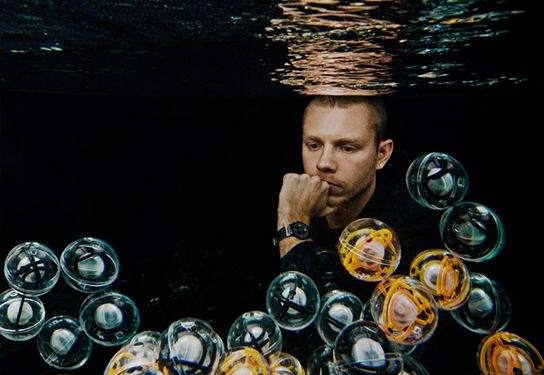Skylar Tibbits SM ’10 was constructing a massive museum installation with thousands of pieces when he had an epiphany. “Imagine yourself facing months on end assembling this thing, thinking there’s got to be a better way,” he says.
A designer and architect, Tibbits was accustomed to modeling and fabricating his complex, architecturally sophisticated sculptures with computation. It suddenly struck him: “With all this information that was used to design the structure and communicate with fabrication machines, there’s got to be a way these parts can build themselves.”

This idea propelled Tibbits to enroll at MIT for dual master’s degrees in computer science, and design and computation — in pursuit of the idea, Tibbits says, “that you could program everything from bits, to atoms, and even large-scale structures.”
Today, Tibbits is breathing life into this vision. A research scientist in the Department of Architecture, and a TED2012 Senior Fellow, Tibbits has launched the Self-Assembly Lab at MIT, where like-minded engineers, scientists, designers, and architects transform commonplace materials into responsive, “smart” materials that can coalesce to form structures, all on their own. Deploying such novel techniques as 4-D printing in collaboration with Stratasys, a firm at the forefront of three-dimensional modeling, Tibbits is experimenting with new products and processes from nano to human scale.
Although still in its infancy, Tibbits’s research might someday make a profound impact on building and construction. One project, called Logic Matter, encodes simple decision-making in a materials, using only that substance’s properties, shape, and geometry. Bricks, for instance, could be programmed to analyze their own loading conditions or orientation and might contain blueprints to build a wall or guide someone in the construction process. “We don’t have to change what we build with,” Tibbits says. “We take seemingly dumb materials and make them more responsive by combining them in elegant ways with geometry and activation energy.”
Natural processes — such as the replication of DNA, protein folding, and the growth of geometrically perfect crystals — inspired Tibbits. He knew these systems — which build complex structures extremely efficiently and can replicate and repair themselve — depend on a common formula: a simple sequence of instructions, programmable parts, energy, and some type of error correction. Mastering this recipe opens up a world of useful applications, Tibbits believes.
One illustrative project underway in Tibbits’s lab may lead to more resilient and efficient infrastructure. He is trying to program a type of peristalsis in water pipes, so they contract and relax like muscles. Unlike current pipes, which tend to break and require constant monitoring and energy input, Tibbits’s pipes can expand and shrink in response to changes in water volume, and could eventually undulate to abet flow. The goal is a “self-regulating system,” where pipes could even repair themselves in case of a puncture.
Self-assembling technologies may eventually help build space structures whose components deposit themselves in zero gravity environments without human intervention, and edifices that become more resilient in response to “noisy and potentially dangerous energies” from phenomena like earthquakes, hurricanes, and tsunamis, Tibbits says. These ideas may seem hard to believe, but “there are structures we can’t build today” that demand new approaches, Tibbits says. “We must ask where self-assembly can solve some of the world’s biggest challenges.”






